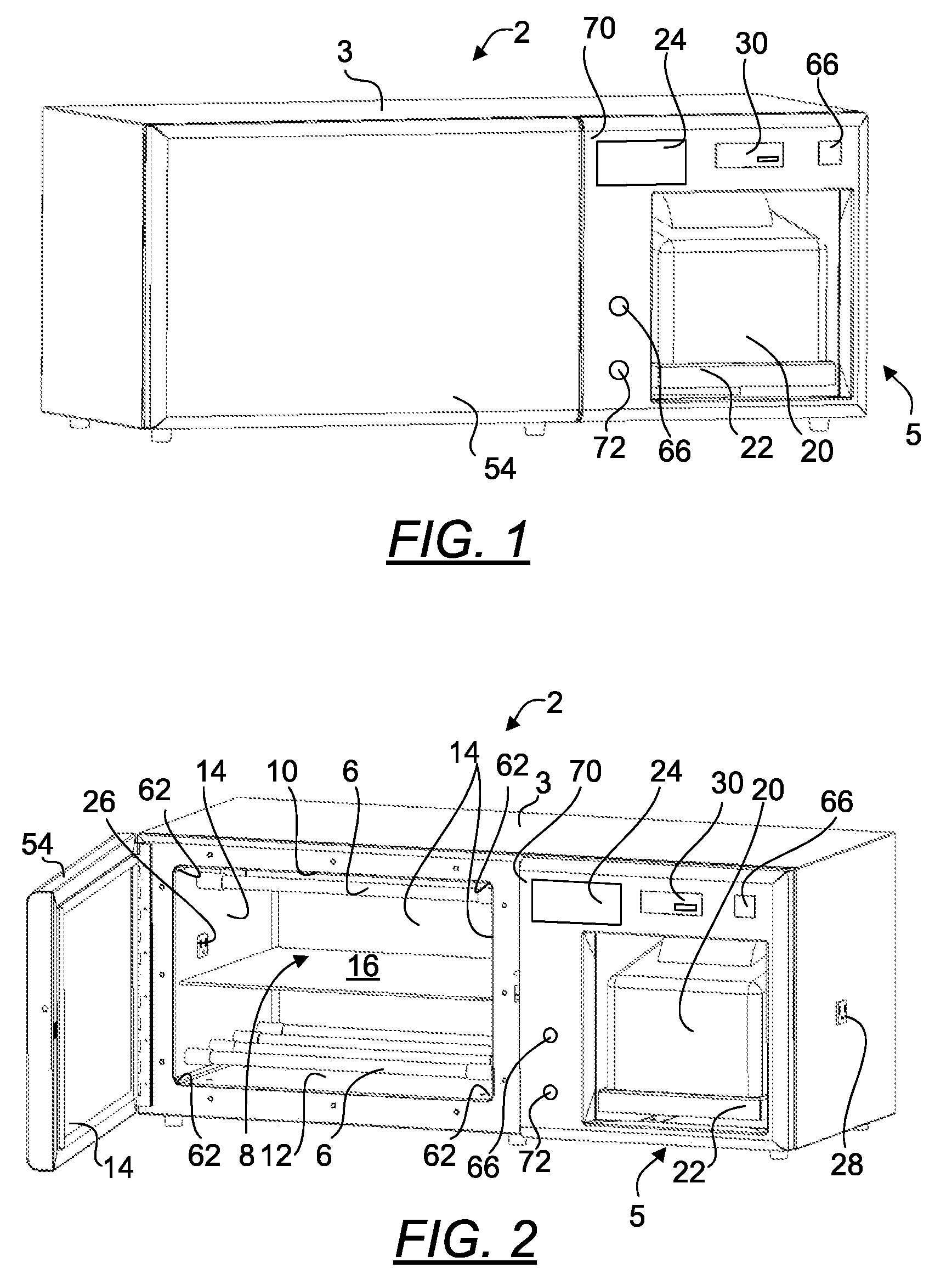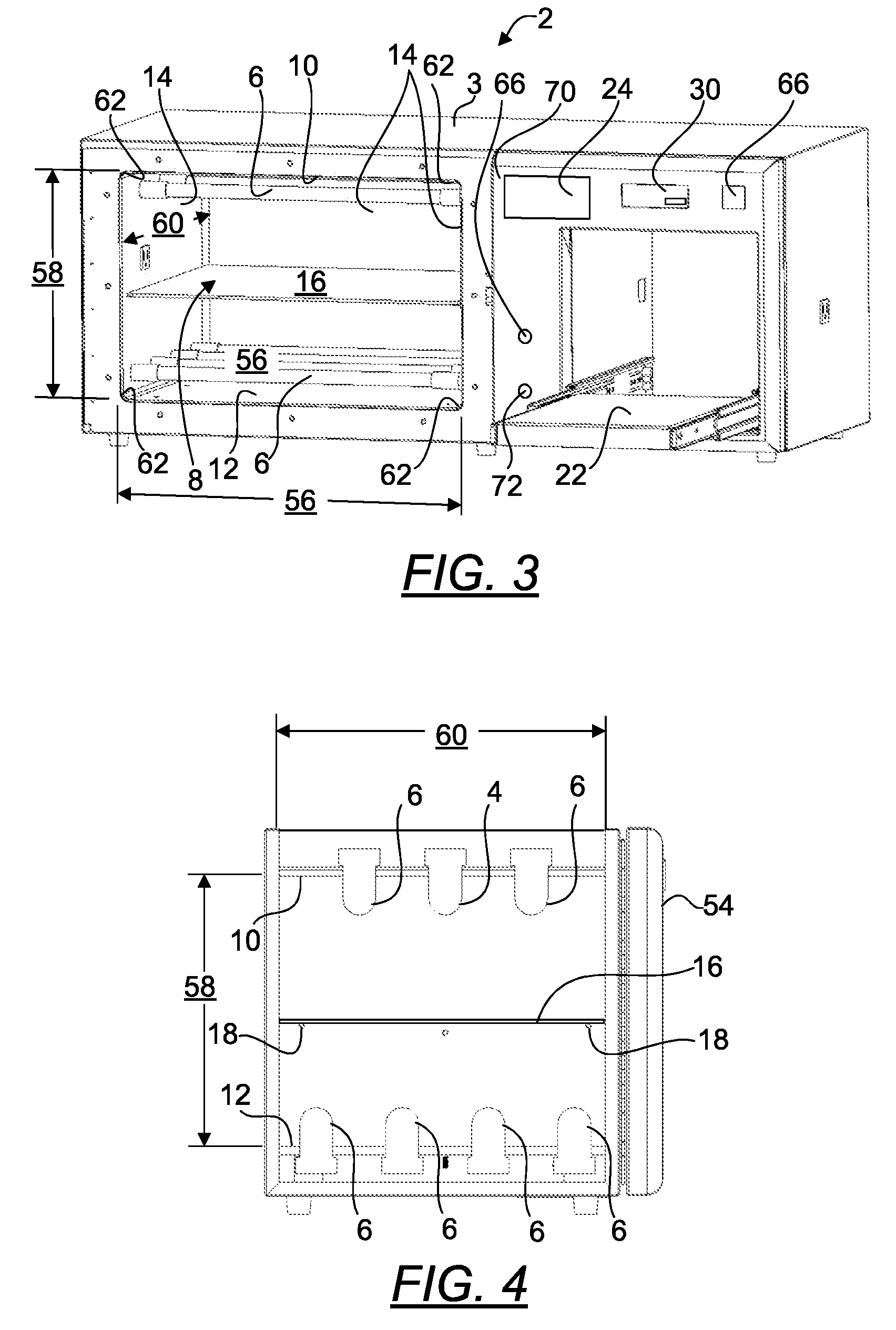Portable antimicrobial ultra violet sterilizer
- Summary
- Abstract
- Description
- Claims
- Application Information
AI Technical Summary
Benefits of technology
Problems solved by technology
Method used
Image
Examples
Embodiment Construction
[0079]FIG. 1 is a top left front perspective view of a portable antimicrobial ultraviolet sterilizer. FIG. 2 is a top right front perspective view thereof with the entrance door open and showing the interior of a sterilizing chamber 8. Referring to FIGS. 1 and 2, a portable sterilizer 2 according to the present invention comprises a housing 3 which forms two compartments, a parts compartment 5 that houses electronic and electrical components and the chamber 8 that is used for the actual sterilization process. The parts compartment 5 houses operative and functional components of the unit such as a printer 20, ballasts, lamp holders, sockets, micro switches, blower motor, ballasts, cooling fan, power supply, wiring and circuit fuses.
[0080]The chamber 8 is a generally rectangular cavity having a ceiling 10, a floor 12 opposingly disposed to the ceiling 10 and four side walls 14 defining a spatial volume sufficient for irradiating an object by direct contact with UVC wavelengths. The ch...
PUM
 Login to View More
Login to View More Abstract
Description
Claims
Application Information
 Login to View More
Login to View More - R&D
- Intellectual Property
- Life Sciences
- Materials
- Tech Scout
- Unparalleled Data Quality
- Higher Quality Content
- 60% Fewer Hallucinations
Browse by: Latest US Patents, China's latest patents, Technical Efficacy Thesaurus, Application Domain, Technology Topic, Popular Technical Reports.
© 2025 PatSnap. All rights reserved.Legal|Privacy policy|Modern Slavery Act Transparency Statement|Sitemap|About US| Contact US: help@patsnap.com



